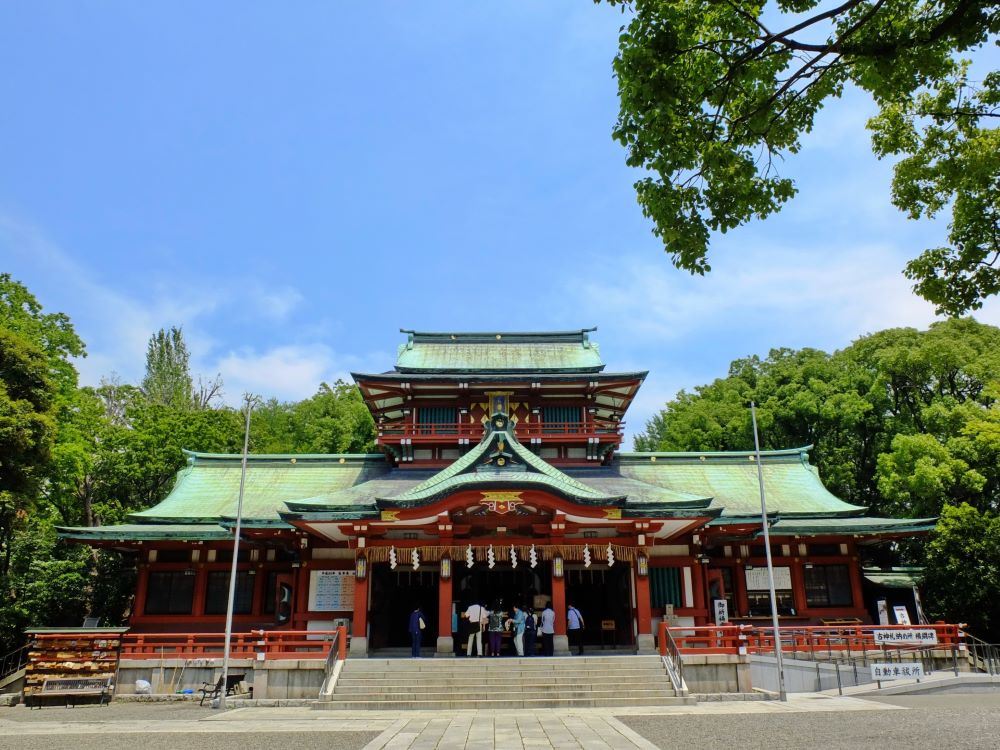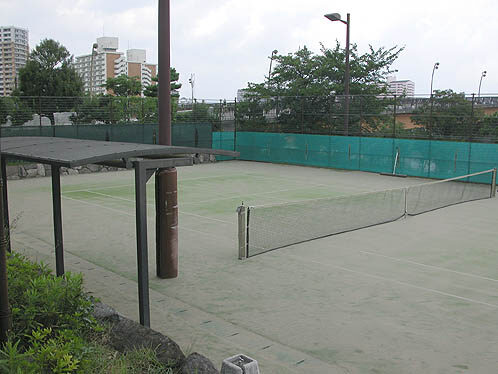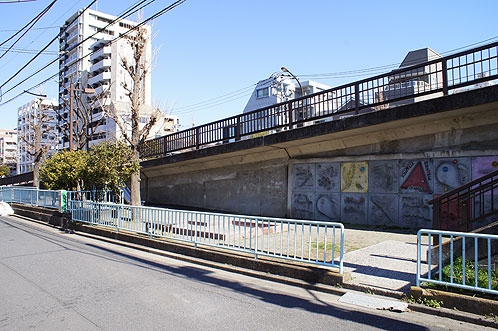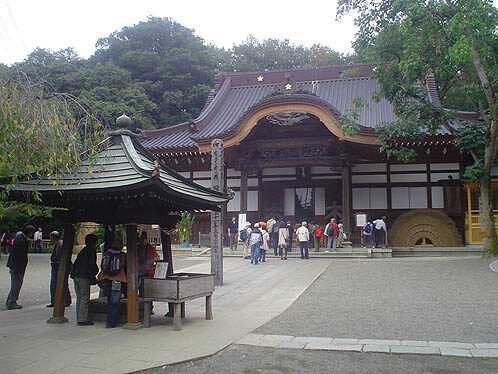Located in Koto City, Tomioka Hachiman Shrine is the largest Hachiman shrine in Tokyo and is dedicated to the god of war and divine protector of Japan and the Japanese people. The shrine has a rich history dating back to 1627 and is a significant cultural landmark in the city.
When you visit the Shrine, you’ll be struck by its grandeur and beauty. The shrine’s architecture is stunning, with intricate details and vivid colors that are sure to leave a lasting impression. The shrine is also home to many festivals and events throughout the year, including the famous Fukagawa Hachiman Festival, which takes place in mid-August.

History
The Tomioka Hachiman Shrine, in the Koto ward of Tokyo, has a rich history dating back to 1627 when it was founded according to an oracle in the present site. The surrounding sandbar area was reclaimed to create an area of over 200,000 square meters for the shrine grounds. The shrine is dedicated to the god of war, Hachiman, who was believed to protect the samurai class and the nation.
In the Edo period, the Tokugawa shogunate revered the god Hachiman and regularly visited the shrine. The shogunate granted permission for two sumo tournaments (Spring and Autumn) to be held at the shrine every year. These tournaments were the origin of the current professional sumo and the predecessor organization of the Nihon Sumo Kyokai which organizes the current Grand Tournaments. As a result, the shrine is rightly considered the birthplace of sumo.
During the Meiji period, the shrine was listed as one of the ten shrines in Tokyo designated by the government. However, during World War II, the shrine was severely damaged by air raids, and the main hall was rebuilt in 1958. The shrine is now a National Important Cultural Property and attracts visitors from all over Japan and beyond.
Cultural Significance
The Tomioka Hachiman Shrine is an essential part of Tokyo’s cultural heritage, and it holds immense significance for the locals. The shrine is known as the birthplace of Kanjin-zumō, which is the origin of the current professional sumo.
The shrine hosted two basho (Spring and Autumn) every year under the permission of the shogunate, and banzuke and other major systems were created in this period. Tomioka Hachiman Shrine is also the biggest Hachiman shrine in Japan and has a unique history that dates back to the Edo period.
It host one of the biggest matsuri of the capital every year, which is a friendly and plebeian atmosphere. The matsuri attracts thousands of visitors from all over Japan and the world, making it one of the most significant cultural events in Japan.
As mentioned, the shrine is also known for its connection to the history of sumo in Japan. The shrine was where sumo tournaments were first held from the late 17th century. There are monuments to sumo on the shrine grounds that speak to its sumo-related history. The shrine is an important place for sumo wrestlers, and many of them visit the shrine to pray for success in their matches.
Aside from sumo, the shrine is also known for its Traffic Safety Ritual. This ritual is held every year to pray for the safety of drivers and pedestrians on the roads. The ritual is attended by many locals and is an essential part of the shrine’s cultural significance.
Architecture
The Tomioka Hachiman Shrine is a beautiful example of Edo-period architecture, and it is one of the few remaining shrines of its kind in Tokyo. The shrine is characterized by its grand entrance gate, which is flanked by two large lion-dog statues. The gate leads to a long path lined with cherry blossom trees that lead to the main shrine building.
The main shrine building is a stunning example of traditional Japanese architecture, with a steeply pitched roof and intricate wood carvings. The building is made entirely of wood and has been carefully maintained over the years to ensure that it remains in excellent condition.
Inside the main shrine building, you will find smaller shrines dedicated to gods and goddesses. Each of these shrines is beautifully decorated with intricate wood carvings and other traditional Japanese artwork. Visitors are welcome to offer prayers and make offerings at these smaller shrines.
The shrine also features a large torii gate, which is the largest wooden torii gate in Tokyo. The torii gate is a symbol of the boundary between the sacred world of the shrine and the secular world outside. It is an impressive sight and is a popular spot for taking photos.
Festivals and Events
If you’re lucky enough to visit Tomioka Hachiman Shrine during one of its festivals or events, you’re in for a treat. The shrine hosts exciting events throughout the year, including:
- Fukagawa Matsuri: This is the shrine’s biggest and most famous festival, held once every three years in mid-August. It made our list of the best festivals in Tokyo and the next festival is scheduled for Agust 11th 2023. During the festival, over 100 portable shrines are paraded through the streets, and you can enjoy traditional music, dance performances, and food stalls.
- Water-Throwing Festival: Also known as the Mizukake Matsuri, this event takes place during the Fukagawa Hachiman Matsuri. Participants throw water at each other to cleanse their spirits and pray for good health.
- Chrysanthemum Festival: Held in November, this festival celebrates the beauty of chrysanthemums, which are considered a symbol of longevity and good luck. You can admire the stunning chrysanthemum displays and participate in tea ceremonies.
Aside from these major events, the shrine also hosts smaller festivals and ceremonies throughout the year. Be sure to check the shrine’s website or ask the staff for more information about upcoming events during your visit.
Attending a festival or event at Tomioka Hachiman Shrine is a great way to experience Japanese culture and traditions. Whether you’re interested in music, food, or just soaking up the festive atmosphere, there’s Something to interest all at this historic shrine.
How to Get to Tomioka Hachiman Shrine
The easiest way to get to Tomioka Hachiman Shrine is by taking the subway. The shrine is a short walk from Monzen-Nakacho Station on the Tozai and Oedo subway lines. From the station, take Exit 3 and head towards the main street. Turn left once you reach the main street and continue straight for about 5 minutes until you reach the shrine.
If you decide to drive, there is a small parking lot near the shrine. However, parking in Tokyo can be difficult and expensive, so it may be best to take public transportation instead.
Visiting Information
If you plan to visit Tomioka Hachiman Shrine, here are some important details you should know:
- Location: The shrine is in Koto City in Tokyo.
- Access: The nearest station is Monzen-Nakacho Station on the Tozai and Oedo subway lines. From there, it’s a 5-minute walk to the shrine.
- Hours: The shrine is open 24 hours a day, but the office and main hall are open from 6:00 AM to 5:00 PM.
- Admission: Admission to the shrine is free.
- Dress code: Visitors are advised to dress modestly and remove their shoes before entering the main hall.
- Etiquette: Visitors should be respectful and avoid making loud noises or taking photos in prohibited areas.
Visiting Tomioka Hachiman Shrine is a great way to experience the rich history and culture of Tokyo. Whether you’re interested in sumo wrestling or simply want to explore the beautiful grounds, this shrine is definitely worth a visit. Just remember to follow the rules and respect the traditions of the shrine.






